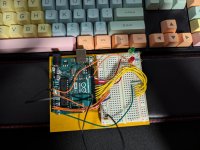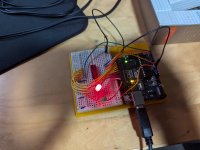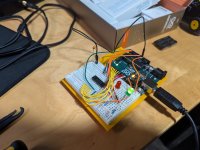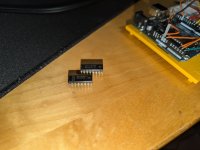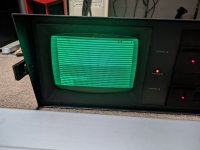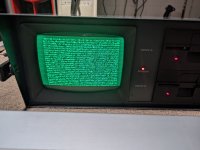Pyroteq
Member
Another update. I pulled every single chip from the motherboard and re-seated them. Bent one or two pins a bit, but managed to straighten them up ok and they went back into the sockets correctly as far as I can tell.
I also soldered a new leg onto the memory IC that got snapped off before.
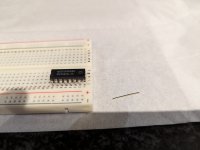
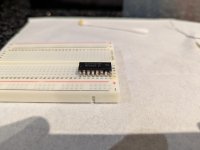
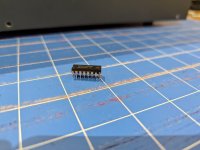
Used a breakaway male header from a breadboard kit which was a pretty good fit as a replacement.
Unfortunately I'm not seeing an improvement so I'll have to wait for some EEPROM's, an Arduino Mega and a DB9 to DB25 cable to arrive which would allow me to program a diagnostic ROM and attempt to get a serial connection.
I'm also curious to see if perhaps powering the board from an ATX power supply I have lying around would change anything. I require some sort of harness though so I'm trying to work out the best way to get something clean and safe that won't require chopping up a good power supply. Looks like ATX headers are pretty easy to buy, but I have no idea what sort of connectors to get for the motherboard power. I saw elsewhere an AT power plug (Molex 90331) might work? Unfortunately I don't have any AT power supplies lying around or the crimping tools required to make a plug manually so might need to resort to using alligator clips or something and just being very careful not to touch the connectors together so I can power it on long enough to test it.
Something weird that happened after I put all the components back in was I got the repeating 'N pattern again, but then when turning it off and turning it back on again I got the scrambled characters which got me thinking perhaps it's power related. I did measure stable voltages at the motherboard power header but maybe elsewhere on the board the power isn't what's required.
I also soldered a new leg onto the memory IC that got snapped off before.



Used a breakaway male header from a breadboard kit which was a pretty good fit as a replacement.
Unfortunately I'm not seeing an improvement so I'll have to wait for some EEPROM's, an Arduino Mega and a DB9 to DB25 cable to arrive which would allow me to program a diagnostic ROM and attempt to get a serial connection.
I'm also curious to see if perhaps powering the board from an ATX power supply I have lying around would change anything. I require some sort of harness though so I'm trying to work out the best way to get something clean and safe that won't require chopping up a good power supply. Looks like ATX headers are pretty easy to buy, but I have no idea what sort of connectors to get for the motherboard power. I saw elsewhere an AT power plug (Molex 90331) might work? Unfortunately I don't have any AT power supplies lying around or the crimping tools required to make a plug manually so might need to resort to using alligator clips or something and just being very careful not to touch the connectors together so I can power it on long enough to test it.
Something weird that happened after I put all the components back in was I got the repeating 'N pattern again, but then when turning it off and turning it back on again I got the scrambled characters which got me thinking perhaps it's power related. I did measure stable voltages at the motherboard power header but maybe elsewhere on the board the power isn't what's required.

